My family has lived in Ireland for as far back as the record books go. Here are my 6 favorite under-the-radar places around the country.
Kathy Mangan

- I'm an Irish citizen with deep roots in the country.
- In my travels in Ireland, I've uncovered hidden gem spots that are under the radar to most visitors.
My family has lived on a hilly farm in Southwest Ireland for as far back as the record books go.
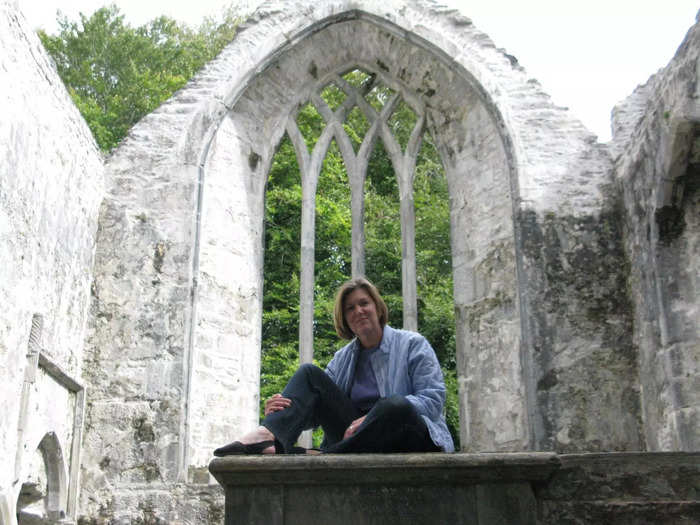
Located near Killarney, County Kerry, my family's ancestral farm features ancient standing stones and an earthen ring fort where the locals say fairies live. These mysterious sites in our fields launched my curiosity into stone ruins and folklore, and other places that evoke the history and culture of the Ireland of my ancestors.
Now as a travel writer, I cover Ireland's latest attractions, hot chefs, and new hotels, yet I am constantly seeking authentic, under-the-radar Irish experiences, the ones that tourists know nothing about. Here are the best ones I've experienced that you should do if you'd like to uncover another side of the country that most tourists miss.
I travel to remote, pretty Glencolmcille when I want to learn about history and language.
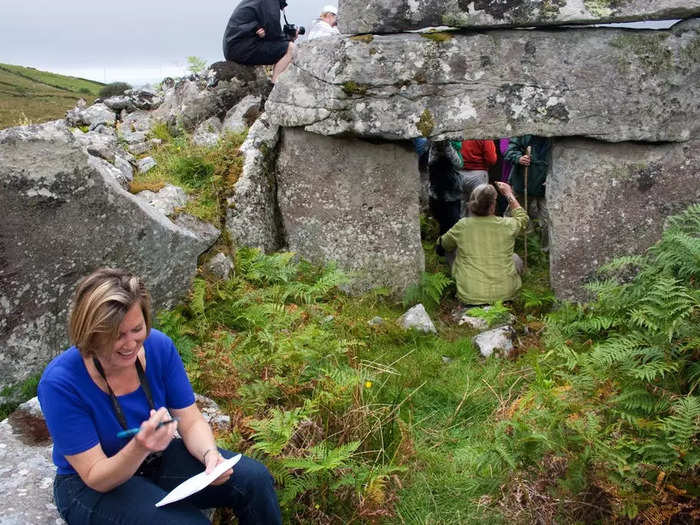
The remote village of Glencolmcille, County Donegal in the northwest corner of the island is one of the most scenic in the country, and from my perspective, is at the forefront of promoting Irish cultural roots.
The Glen (as it's known by locals) features thatched-roof cottages scattered across the hillsides and is surrounded by mountains with a crescent beach facing the Atlantic.
I always make sure to see Glencolmcille Folk Village, a living-history museum run by locals, to learn about cottage life over the centuries.
I also recommend a multi-day cultural program at Oideas Gael, an educational center that adds a special sauce to this remarkable destination. The Gaelic language courses here are renowned, and you can also learn to play the Irish harp, weave tapestries, paint landscapes, or join a walking group.
The Fr. James MacDyer Archaeology School is my favorite offering at Oideas Gael. I love joining archaeologists and students to explore the area's prehistoric court tombs, portal dolmens, and forts dating back up to 6,000 years ago, as well as early Christian sites.
Afterward, I head to Roartys Bar every evening in Glencolmcille, along with so many locals and visitors for a pint and traditional music. As the Irish say, the craic (a Gaelic word for lively banter) here is mighty.
Explore a pirate queen's stronghold on Clare Island, with what I consider to be the most charming accommodations in the entire country.
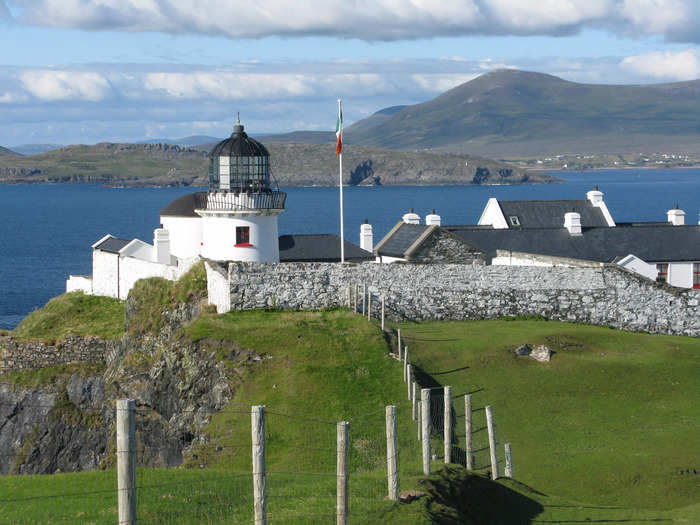
Clare Island in Clew Bay, County Mayo near the town of Westport on the west coast is like a time capsule. It's quiet, historic, and undisturbed by modern development.
In the 16th century, Clare Island was home base for Grace O'Malley, known as the pirate queen since she fiercely controlled the waters surrounding Clew and Galway Bays with her own fleet, demanding payment from passing ships.
Her tower house once loomed over the small harbor and now makes for an interesting day trip. It's a 20-minute ferry ride from Roonagh Pier, but I always stay longer since it's home to one of the most charming accommodations I've found in the entire country: Clare Island Lighthouse.
Built in 1806 and now a small boutique hotel in Ireland's Blue Book, it embodies authentic luxury. I love the gourmet cuisine, intimate hospitality, and antique-filled rooms with cozy fireplaces.
From there, take a taxi to the pirate queen's final resting place at the 12th-century Cistercian Abbey. The interior features frescoes of knights, dragons, and musicians, and are among the finest medieval paintings in Ireland, in my opinion. Here, I like to revel in the sweeping views of Achill Island and Croagh Patrick while hiking trails or renting bikes at the harbor.
Learn to fly falcons like Irish nobility.
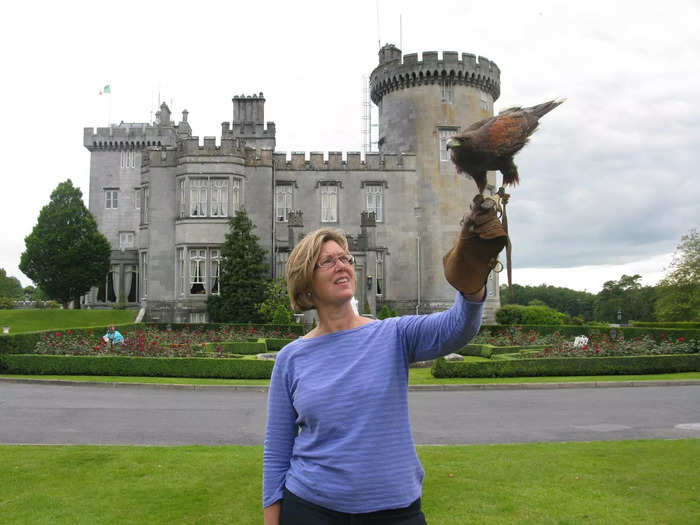
Going back nearly a millennium, falconry was the sport of the High Kings and chieftains of Ireland who kept highly trained birds for hunting. My peasant ancestors didn't partake in falconry, yet I still find it intriguing. Recently, new falconry centers have opened around the country making it far more accessible to all people.
Falconry in the past was only offered on historic estates turned into five-star hotels, like Ashford Castle and Dromoland Castle. Now, there are many falconry centers, such as the National Bird of Prey Centre at Russborough House in Blessington, County Wicklow; Mayfield Birds of Prey in the 1850 Kilmacthomas Workhouse on the Waterford Greenway; and Falconry Kerry on a farm near Killarney.
I appreciate working one-on-one with falcons at any of these places for a few hours because it affords an up-close view of these magnificent creatures and their flying skills. A falconer will typically provide an explanation of the sport's history and the intricacies of keeping and training these special animals. In my experience, this often included a private hawk walk where the falconer showed me how to launch a hawk from a leather gauntlet and lure it back with bait. It was intense but highly thrilling.
Clip-clop along bog roads on a horse-drawn caravan for a one-of-a-kind vacation
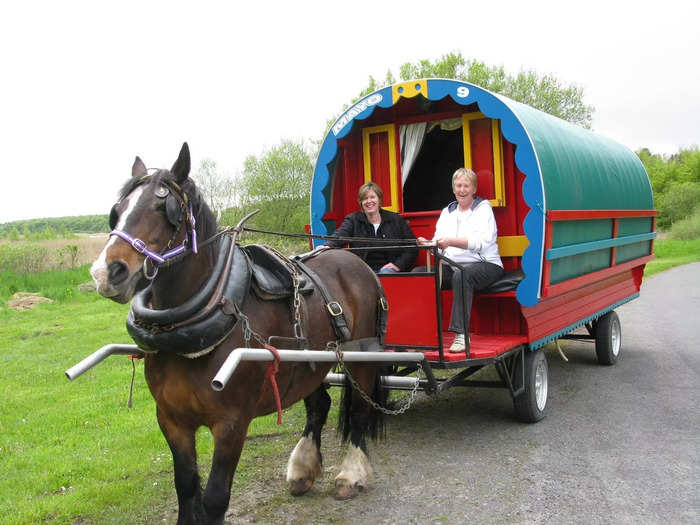
Taking in the countryside at a slow pace, in the open air, to the sound of jingling horse harnesses and the clip-clop of horse hooves, is an entirely different experience from a cooped-up car trip. In fact, it's one of the most relaxing vacations I've ever had.
Western County Mayo near the coast north of Galway is the perfect place for it with quiet bog roads, traditional pubs, and historic sites. I enjoyed working with the team at Mayo Horsedrawn Caravan Holidays in Belcarra, which offers brightly painted traditional wagons with barrel-shaped tops pulled by mild-mannered workhorses and full support.
I'm not used to handling horses, but the team showed me how to harness, feed, water, and direct the horse. They checked on us (and the horse) at various points and instructed the horse's cool-down, grooming, watering, and feeding. They also planned scenic routes averaging three to seven-and-a-half miles maximum daily, which takes about two to two-and-a-half hours with the caravan, to ensure animal wellbeing. We camped overnight on farmyards with bathroom facilities, electrical hookups, and horse pastures, and made photo stops at places like the ruins of Donomona Castle and Burriscarra Abbey.
When horses were happily grazing, we explored Ballintubber Abbey, built in 1216, and Moore Hall, which is the shell of a grand estate burned in the Irish Civil War that's supposedly haunted. We wrapped up each day at a cozy pub.
The 2022 Mayo Horsedrawn Caravan season is July through August. Book a three-, four- or
seven-night itinerary, or a glamping overnight at the Belcarra base.
In Roscommon, find ancient ruins, cycling routes, looped hiking trails, and a quaint inn with a foodie focus.
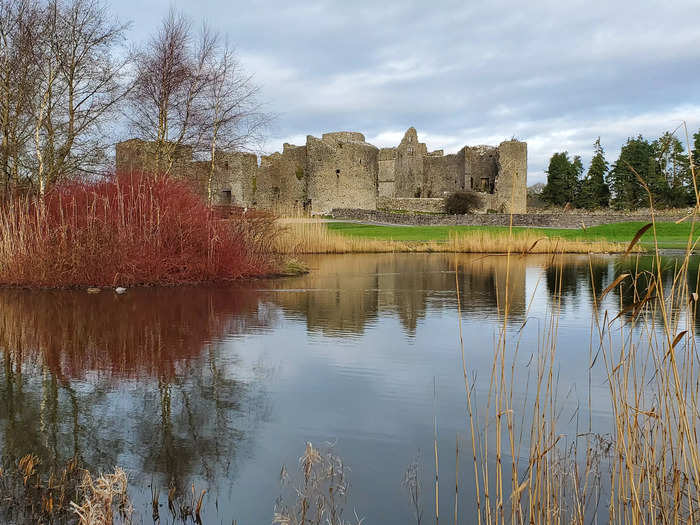
Roscommon is nearly at the center of Ireland, and for me, is at the heart of a warm Irish welcome.
The compact town has impressive medieval ruins and a cheerful, welcoming inn, Gleeson's Roscommon. It's an 1870s stone manse on Market Square, where proprietors Mary and Eamonn Gleeson, and their daughter Cáit, have happily helped plan my adventures. They offer a licensed local tour guide and complimentary bicycles, too.
As a foodie, I also have always appreciated their locavore approach to cuisine; the family farm provides organic lamb and award-winning breakfasts. I recommend the lamb stew with a local Sheep Stealer farmhouse ale.
Guests at Gleeson's should also ask for the inn's trail and cycling route information and maps, as the area is especially suited to walkers and cyclists. Walkers might try the four-mile looped Cloonlarge Bog Walk to spot peatland butterflies, while cyclists can target segments of the 131-mile Green Heartlands Cycle Route that conveniently cuts through town.
Additionally, take time to explore the north edge of town and the 13th-century Roscommon Castle with a double-towered gate entrance and intact walls, as well as a wildflower meadow and bird walk. On the south end of town, Roscommon Abbey, built in 1253 by the King of Connacht, has atmospheric ruins.
Soak in a traditional seaweed bath, which I consider to be the ultimate in luxury relaxation.
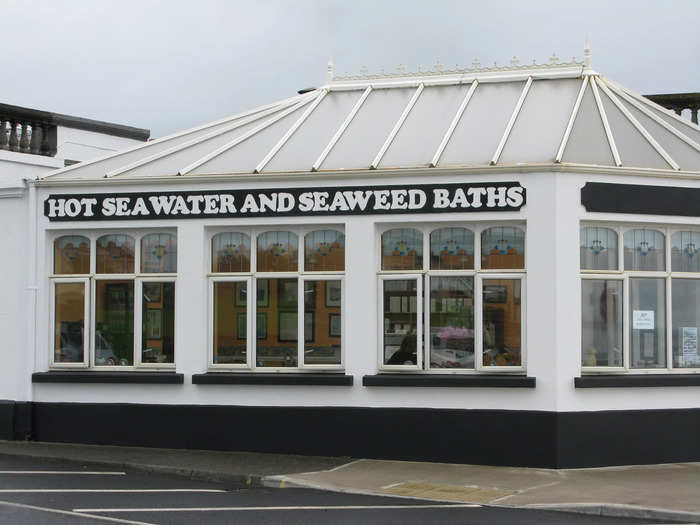
For centuries, the Irish have been advocates of soaking in seaweed for a variety of health benefits, and I'm a convert, too. I consider a steaming tub of hot seawater and cut-fresh seaweed as an ultimate luxury that's purported to offer nutrients that might help battle a cold or ease aching muscles. It's glorious and inexpensive.
Most people assume seaweed is stinky, but I assure you that the organic, hand-harvested wrack seaweed typically used in Irish seaweed baths turns bright green in the hot water and does not smell. Each customer gets fresh seaweed.
I go to Kilcullen's Seaweed Baths in Enniscrone, County Sligo along the Wild Atlantic Way that dates back to Edwardian times. I love the authentic atmosphere here with claw-footed tubs, brass taps, a wooden steam cupboard to open your pores before the bath, and a cold shower to close them afterward.
Additionally, Collin's Seaweed Baths on Ladies Strand in Ballybunion, County Kerry in southwest Ireland was established in 1932. It also features claw-footed tubs in a bathhouse with the rhythmic sound of waves breaking as you soak. Some customers run into the cold sea for a dip as a finale, but not me.
For modern seaweed bathing experiences, check out Voya Seaweed Baths in Strandhill, County Sligo, which also markets seaweed-based spa products; Connemara Seaweed Baths on Clifden's Market Square, County Galway; and Soak Seaweed Baths in Newcastle, County Down, Northern Ireland.
READ MORE ARTICLES ON
Popular Right Now
Popular Keywords
Advertisement